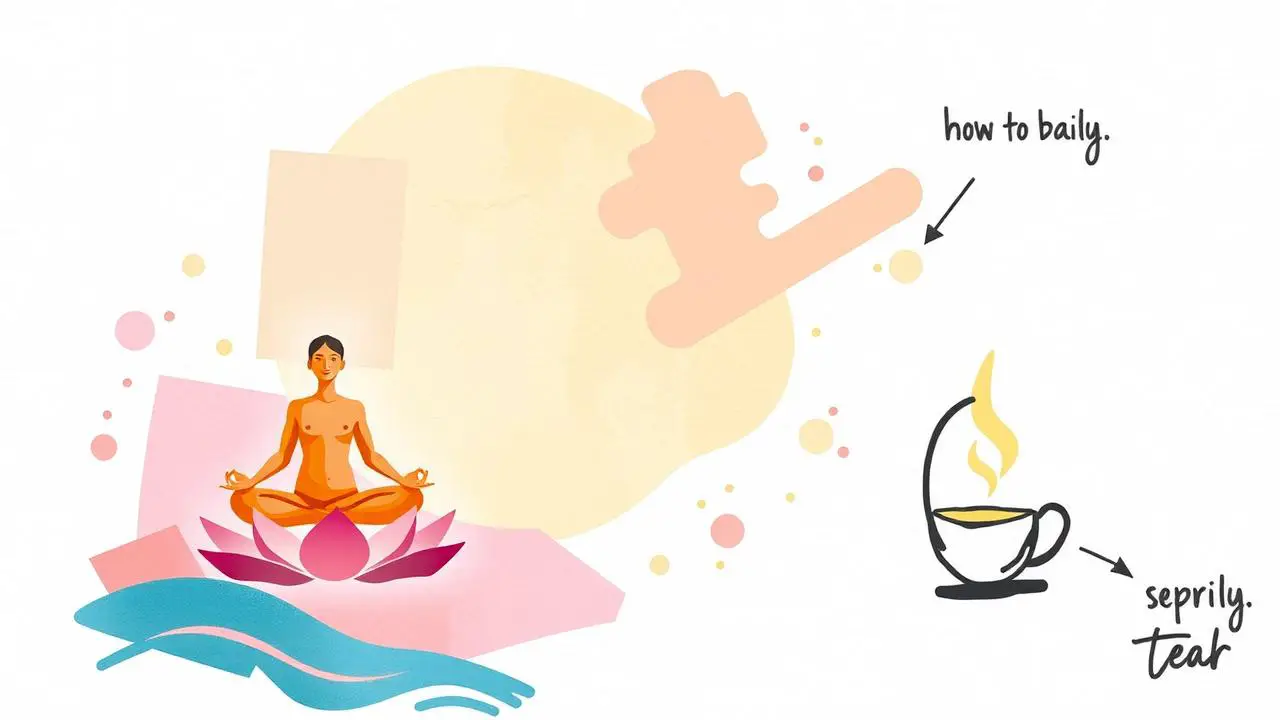Mindfulness is a practice of being aware of this moment. Let yourself accept and be mindful of your thoughts and feelings – no judgement! This is an effective way to reduce stress and create inner peace.
Mindfulness techniques such as meditation, deep breathing, and progressive relaxation have been shown to be effective in reducing symptoms of stress. Other techniques include yoga, tai chi, and guided imagery, which can help to cultivate feelings of relaxation and focus the individual’s attention on the present moment.
In this article, you will gain knowledge of techniques that help reduce stress.
Definition of mindfulness
Mindfulness is a way of living that helps people take care of stress and be more in the moment. It is being aware of the current time, noticing and accepting thoughts, emotions, physical sensations and the environment – without judging them. ‘Mindfully aware’ and ‘moment-to-moment awareness’ are other terms for mindfulness.
A major part of mindfulness is consciousness – being aware of thoughts and feelings, and the environment. It involves seeing how our bodies respond to different scenarios, so we can understand what causes us stress and how to reduce it. Mindfulness helps us to recognize how our emotions affect us physically, for example fear can cause tightness in the chest, or joy can bring back energy to the body.
Also, mindfulness teaches us to be non-judgmental – allowing thoughts and feelings without criticism or self-judgment. People often become too critical even for minor mistakes, and this can lead to anxiety and stress. Mindfulness encourages gentleness rather than criticism.
It also encourages acceptance – recognizing and releasing negative thinking instead of dwelling on it. This has a positive effect on wellbeing. Additionally, it promotes connection – connecting with others through compassion and understanding instead of making judgments. This helps build peace and cooperation in relationships.
Benefits of mindfulness
Mindfulness is a practice that involves being aware and accepting one’s thoughts, feelings, and environment in the present moment. Research suggests that it is effective in managing stress and anxiety. It can increase self-awareness, build resilience, and help people live with more compassion.
Practicing mindfulness can teach people insights into their life experiences, help them form meaningful relationships, and use their skills to improve their well-being. The physical benefits of mindfulness include:
- Lower levels of cortisol
- Better immune system functioning
- Improved sleep
- Decreased pain
- Better concentration
Mindful individuals also tend to be happier as they can accept life events more easily. They can also communicate positively with others in difficult times. Practicing regularly can help people become more self-accepting and have healthier coping mechanisms to deal with illness or stress.
Overall, mindfulness can help people manage difficult emotions and lead a balanced lifestyle with inner peace.
Mindful Breathing
Practice mindful breathing! It helps reduce stress. Focus on your breath, feel the sensations in your body.
Become aware of your body and its messages.
This can help you relax and gain control of your thoughts and feelings. Doing mindful breathing is good for your physical and mental health.
Techniques for mindful breathing
Mindful breathing is a great way to relax and stay mindful. It allows you to be aware of your emotions and your wellbeing. Here are some simple yet effective techniques:
- Ujjayi breath: This type of diaphragmatic breathing goes low through your diaphragm and torso. Inhale deeply through your nose. Then exhale for the same amount of time with an “ahhh” sound.
- Omnipresent breathing: Focus on each in-breath. Send love, compassion, and acceptance to all living things. When you exhale, have compassion just for yourself. Repeat throughout the breath work.
- Abdominal or Belly Breathing: Fill your lungs with oxygen to relax. Focus on one spot and breathe deeply through your nose. Push your stomach out when inhaling and back in when exhaling. Count each second as you do this. This can help calm down anxious states and relieve tension. You’ll be more present, alert, and tranquil in yourself.
Benefits of mindful breathing
Mindful breathing is a good way to lower stress, sharpen mental clarity, and help physical health. Research shows that regular mindful breathing can have positive effects on bodily functions such as heart rate and blood pressure.
Studies also suggest mindful breathing can decrease anxiety, aid concentration, and build resilience. If done over time, it can help an individual be better at tackling difficult emotions or situations. Mindful breathing is a type of meditation that asks people to stay in the moment, which can lead to more awareness and control of feelings and thoughts.
Doing mindful breathing often brings lots of benefits like:
- Better focus
- More self-awareness
- Better emotions management
- Tension relief
- Enhanced relaxation
- Improved physical health
It is especially helpful for those with Panic Disorder, depression, or PTSD. Mindful breathing techniques may also help reduce chronic pain, and address symptoms related to Parkinson’s disease or Fibromyalgia.
The advantages of mindfulness go beyond physical health. It can help you become more mindful of your environment and manage life’s challenges with a clear and peaceful mind. Additionally, it gives you the chance to focus on the present only; you can forget all worries about the past and future, while gaining many positive benefits in your mind and body with practice!
Body Scanning
Body scanning is a mindfulness trick for reducing stress and feeling relaxed. Focus your attention on your body, beginning with your toes and gradually moving up to the head. Observe and be aware of any feelings in your body without judgment. This will help you become more aware of your body.
Stress and uneasiness can be better managed this way.
Techniques for body scanning
Body scanning is a mindful method that directs your attention to the feelings in your body. This can help you move away from stress. As you concentrate on one area of your body after another, you start to see subtle inner sensations. This time of being with yourself helps raise awareness and self-connection.
The goal of a body scan is to bring mindful awareness to all the parts of your body to reduce stress and induce relaxation. It starts with noticing your breath before gradually centering on physical sensations from head to toe. During a body scan, it’s natural for thoughts and feelings to come up; simply accept each feeling or thought as it appears and go back to focusing on physical sensations within each part of the body.
Techniques for body scanning are:
- Focused breathing: inhale for 4-6 seconds and exhale for 8-12 seconds
- Scanning with sound: repeat relaxed words (like “Softening…”) to bring focus
- Starting at the toes while picturing relaxation throughout each area in the foot – then going up one section at a time through lower leg, upper leg, hips/pelvis area, stomach/abdomen area, back area etc., up to head and face before coming down again
- Using imagery or visualization – such as gentle energy streaming into an area or spreading warmth/coldness throughout an area
- Using affirmations – to remind yourself that you are safe and loved during this process.
Benefits of body scanning
Body scanning is a mindfulness way to reduce stress, anxiety and pain. It helps you to focus on different parts of your body from head to toe. Relaxation and awareness of physical sensations are promoted. People have said they feel more relaxed during the scan. They also find it helpful to understand their body better.
Using body scanning allows you to be aware of any physical sensations. New sensations can be noticed – like tension or tightness. It helps to accept difficult emotions without judgement.
It also enhances awareness of posture and behavior patterns. Taking regular breaks to see how posture affects us helps us learn better postural alignment and wellbeing.
The process of connecting with our bodies can lead to self-acceptance and away from ruminating worries and anxious thinking. This can keep depression away.
Guided Visualizations
Guided visualizations are great for stress relief. These consist of mental images that you create in your head while listening to instructions. They can help you stay calm when feeling overwhelmed. Here, we take a look at the advantages of guided visualizations and how to use them.
Techniques for guided visualizations
Guided visualizations are a type of mindfulness for relaxation and stress management. Through this process, you can picture positive images, which can bring physical and emotional benefits. These include better sleep, lower anxiety, reduced fatigue, improved concentration, and increased self-confidence.
It is important to be open-minded when practicing guided visualizations. This will make it more relaxed and enjoyable rather than stressful.
The following might help for relaxation and stress management:
- Relaxation Imageries: Visualize calming environments to escape stress.
- Personal Achievement Visualization: Imagine yourself successful in the desired outcome.
- Body Scan Meditation: Recognize tension throughout the body and imagine it relaxing with practice.
- Anchor Relaxation Exercise: Focus on breathing and attach a positive image or feeling to each inhale and exhale.
- Transformational Imagery: Replace negative feelings with peaceful images.
- Healing Journey Meditation: Imagine yourself in a healing setting.
Benefits of guided visualizations
Guided visualizations are a form of mindfulness techniques used to reduce stress and anxiety. By using this practice, you close your eyes and focus on images created in your mind with the help of words or images spoken by someone else. This mindful practice can bring a relaxed state to both the mind and body, increasing focus and awareness while diminishing stress.
Benefits of guided visualization include:
- Stress/Anxiety Reduction: Guided visualization has been proven to lower cortisol levels (the hormone associated with stress). It relaxes the body and releases tension from mental and physical sources.
- Joyful Feelings: This practice helps regulate thoughts and emotions, leading to a state of joyfulness. It transforms negative processes into positive ones.
- Improved Sleep: Guided visualization targets anxious thoughts that often prevent good sleep. It relieves mental tension and restores sleep patterns for better health.
- Enhanced Concentration: This practice calms an overactive mind and increases the ability to focus on tasks.
- Heightened Creativity: Structured imagination gives us a break from everyday demands, allowing creativity to blossom.
- Accessed Intuition: When we let go of control, we open ourselves up to divine wisdom that lies beyond reasoning or logic. This allows our intuition to be used for decision making or problem solving.
Mindful Movement
Mindful movement is key to reducing stress. It combines mindfulness, movement, breath, and meditation. This practice can help replace old patterns of stress and tension with healthier, more grounding techniques. Make mindful movement part of your daily routine and reap the rewards! It’ll boost your emotional, mental, and physical wellbeing and help you build a healthier mindset.
Techniques for mindful movement
Mindful movement is an essential element of incorporating mindfulness into our lives. It may be used to find balance, reduce stress, understand our body’s needs, and raise mental clarity. Mindful movement includes everything from stretching, yoga, running, to any exercise.
The secret is paying attention to the present moment rather than the end result. For example, when running, instead of striving to finish quick, focus on your breathing as you inhale deeply and exhale steadily. As for stretching or doing yoga poses, focus on releasing tension from each muscle group with each breath, not just going through the motions without thought.
Techniques for mindful movement differ from person to person, depending on their needs and preferences. Some common techniques include:
- Breath exercises: Focus on taking deep breaths that fill up your lungs, then slowly exhale until relaxed.
- Guided imagery: Imagine yourself in a tranquil environment, like a beach or forest, focusing on feelings of relaxation.
- Body scan meditation: Start at your toes, noticing any areas of sensation or discomfort, then eventually dissipating them.
- Yoga postures: Move through yoga postures with prolonged breaths.
- Sound meditation: Concentrate on your own inner sounds, like humming or chanting, as a form of relaxation therapy.
- Tai chi/Qi Gong/Martial Arts: Engage in slow forms of martial arts, connecting with your inner energy flow through controlled breathing.
Benefits of mindful movement
Mindful movement is a practice of being aware of your body’s physical sensations, emotions and thoughts during physical activity. It helps you connect to your body, become more flexible, reduce stress levels and improve overall health.
The benefits of Mindful Movement include:
- Improved body awareness. You’ll become more mindful of proper form and alignment.
- Increased equilibrium. Connecting the mind to the body will improve balance and stability.
- Improved relaxation response. Oxygen released during exercise helps release neurochemicals associated with relaxation and mental clarity.
- Improved performance. Muscle recruitment will be optimized for efficiency, leading to improved athletic performance. (Barlow et al., 2016).
Conclusion
Mindfulness is useful to reduce stress and anxiety. You can use it almost anywhere, any time. A few minutes of mindful breathing can bring peace and clarity.
It’s best to do these techniques often. Keep a journal to record your experiences and see which ones work best. Don’t expect quick results – it takes time for mindfulness to become natural and transform how you manage stress.
Frequently Asked Questions
Q: What is mindfulness?
A: Mindfulness is the practice of being aware and present in the moment. It is a form of meditation that focuses on non-judgmental awareness of one’s thoughts, feelings, and bodily sensations.
Q: What are some mindfulness techniques for stress?
A: Mindful breathing, body scanning, and progressive muscle relaxation are all mindfulness techniques that can be used to reduce stress. Focusing on the breath and noticing the body’s sensations can help to bring the mind and body into a relaxed state.
Q: How often should I practice mindfulness techniques for stress?
A: It is recommended to practice mindfulness techniques for stress daily for at least 10 minutes. Doing so can help to reduce stress levels and improve overall wellbeing.




